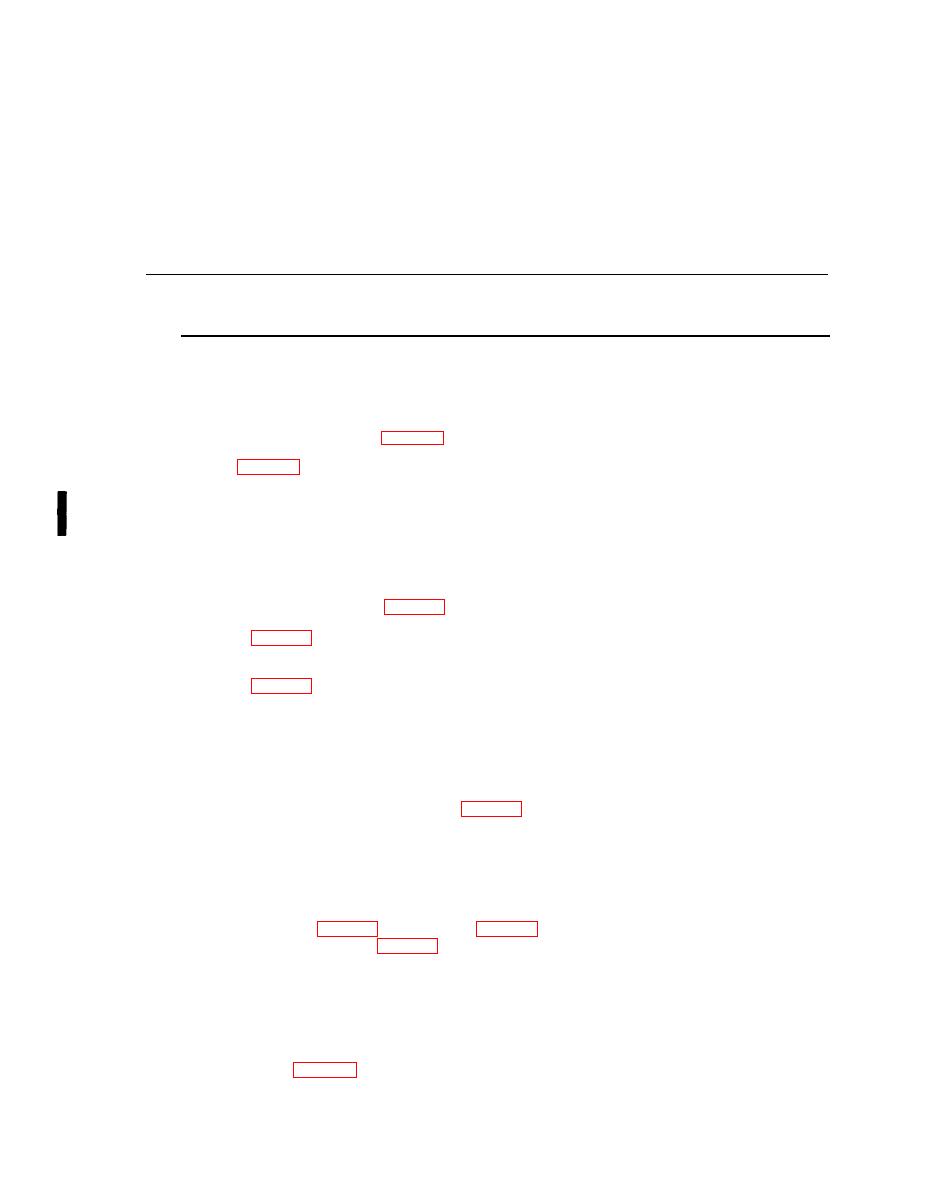 |
|||
|
|
|||
|
|
|||
| ||||||||||
|
|
 TM10-3930-242-12
Section V. TROUBLESHOOTING
actions to be taken. Perform the tests/inspections
4-9. General
and corrective actions in the order listed.
This section contains troubleshooting information
for locating and correcting most of the malfunctions
4-10. Limitation
which may occur in the 6,000 pound rough terrain
This manual cannot list all malfunctions that may
forklift truck, Army Models MHE 200, MHE 202,
occur, nor all tests or inspections and corrective
and MHE 222. Each malfunction for an individual
actions. Notify your supervisor when malfunctions
component, unit, or system is followed by a list of
occur that are not covered in troubleshooting table
tests or inspections. The tests and inspections will
4-2.
help to determine probable causes and corrective
Table 4-2. Organizational Troubleshooting
Malfunction
Test or inspection
Corrective action
1. ENGINE WILL NOT CRANK
Step 1. Inspect battery connections for poor contact. Clean contact surfaces of battery connections and reinstall serviceable
cables. Replace cables that are damaged beyond repair,
Step 2. Using a hydrometer, test the specific gravity of the electrolyte. A reading of 1.220 or lower indicates that the battery
is less than half charged. If electrolyte is too low to test, add distilled water and charge batteries for one hour before
checking hydrometer readings.
If battery does not accept charge, replace (para 4-34).
Step 3. Inspect starter for defective wiring.
Replace starter (para 4-37).
WARNING
If NBC exposure is suspected, all air filter media should be handled
by personnel wearing protective equipment. Consult your unit NBC
officer or NBC NCO) for appropriate handling or disposal procedures.
2. ENGINE CRANKS, BUT FAILS TO START
Step 1. heck to be sure engine strut off is pushed down and that cable is actuating the governor control.
Step 2. Check to be sure emergency shut-off is in start position.
Step 3. Check the fuel tank for fuel and fuel filters for contamination.
Refuel and/or replace filters as necessary (para 4-22).
Step 4. Inspect air cleaner for obstruction.
Clean if required (para 4-20).
3. ENGINE OPERATES ERRATICALLY
Step 1. Check to be sure fuel filters are not obstructing flow.
Clean if required (para 4-22).
Step 2. Check air cleaner for restriction.
Clean if required (para 4-201.
Step 3. Notify supervisor and direct support to check governor and fuel rack.
4. ENGINE LACKS POWER
Step 1. Inspect throttle linkage for damage, excessive wear, and limited movement.
Adjust serviceable linkage. Replace damaged or excessively worn linkage.
Step 2. Inspect air cleaner for damage or obstruction.
Replace damaged air cleaner or faulty air cleaner hoses (para 4-20).
Step 3. Notify supervisor and direct support maintenance to check governor and fuel rack.
5. ENGINE OVERHEATS
Step 1. Check radiator fins for free air flow.
Clean if required.
Step 2. Inspect for loose, damaged, or broken fan belts.
Adjust loose fan belts. Replace unserviceable belts (para 4-28).
Step 3. Inspect for poor coolant circulation.
Replace faulty hoses, clamps (para 4-26) and thermostats (para 4-24).
Check water pump and replace if faulty (para 4-25).
6. EXCESSIVE LUBRICATING OIL CONSUMPTION
Step 1. Inspect engine compartment for evidence of oil leakage.
Replace defective or worn hoses, tubing, fittings, and gaskets.
7. TRANSMISSION AN TORQUE CONVERTER OVERHEATS
Step 1. Inspect for low transmission oil level.
Service transmission IAW LO 10-3930-242-12-1.
Step 2. Check for loss of oil due to defective hose assemblies.
Replace hose assemblies (para 4-77).
Change 3
|
|
Privacy Statement - Press Release - Copyright Information. - Contact Us |